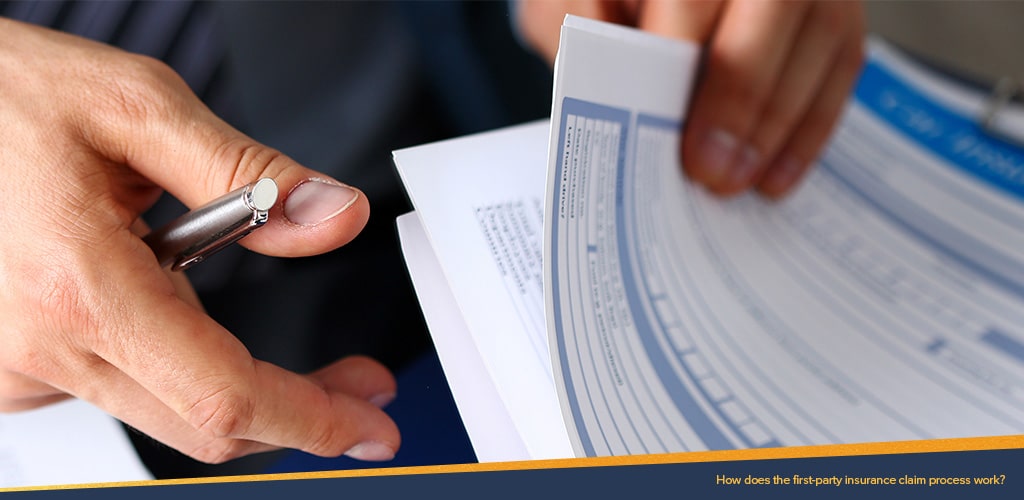
When adversity hits, be it a car accident, a house fire, or a personal injury, navigating the first-party insurance claim process can often feel like setting out on a daunting expedition. Understanding the intricacies of the first-party insurance claim process is crucial in ensuring that you secure a fair and prompt settlement. We’re here to help you unravel the complexities of this process, equipping you with the essential knowledge and confidence needed to effectively manage your claim. By delving deeper into the steps involved, common challenges, and strategic tips, we aim to empower you as you embark on this challenging journey, helping to ensure that you achieve the most favorable outcome possible.
Understanding First-Party Insurance Claims
A first-party insurance claim is a claim you make with your own insurance company for damages to your property or for personal injury. This is different from a third-party claim, which involves seeking compensation from someone else’s insurance provider.
Initiating the Claim
The claim process begins with you, the policyholder, notifying your insurance company about the loss. This notification should be done as soon as possible after the incident. You’ll need to provide basic information about the incident and the extent of the damages or injuries.
Understanding Your Insurance Policy
It’s essential to thoroughly understand your insurance policy. Know what types of damages are covered, your coverage limits, and any deductibles that apply. This knowledge will help you set realistic expectations for your claim.
Documentation and Evidence Collection
Documenting your loss is a critical step in the claim process. This includes taking photographs of the damage, saving receipts for any immediate repairs, and compiling any relevant medical records in case of personal injury. The more evidence you can provide, the stronger your claim will be.
The Adjustment Process
After you file your claim, the insurance company will send an adjuster to inspect the damage and determine the cost of repairs. It’s important to be present during this inspection to ensure that all damages are thoroughly evaluated.
Reviewing and Negotiating the Settlement Offer
Once the adjuster has assessed the damage, the insurance company will make a settlement offer. Review this offer carefully to ensure it covers all your damages. Don’t hesitate to negotiate if you feel the offer is insufficient.
Dealing with Claim Disputes
If your claim is denied or you disagree with the settlement offer, you can dispute the decision. This might involve providing additional evidence, revising your claim, or seeking legal assistance.
The Role of Legal Assistance in First-Party Insurance Claims
In complex claims, or when disputes arise, having a lawyer can be invaluable. Legal experts like those at Daly & Black, P.C. Law Firm can provide advice, help negotiate with insurance companies, and represent you in legal proceedings if necessary.
Navigating the first-party insurance claim process requires patience, attention to detail, and a good understanding of your insurance policy. From initiating your claim to negotiating your settlement, each step is crucial in ensuring a fair outcome.
At Daly & Black, P.C. we understand the challenges and intricacies of the first-party insurance claim process. Our team of experienced attorneys is ready to guide you through each step, offering the expertise and support you need to maximize your settlement.
If you’re facing the daunting task of filing a first-party insurance claim, don’t go it alone. Contact us for a consultation. Let our expertise streamline your claim process, ensuring you receive the compensation you deserve. With us by your side, you can navigate the insurance claim process with confidence and ease.
Practice Areas
- First-Party Insurance Attorney
- Personal Injury Lawyers
- Medical Malpractice
- Mass Tort Lawyers
- Necrotizing Enterocolitis Attorney
- Truck Accidents
- Ski and Snowboard Accidents Lawyer
- Defective Products Attorney
- Aviation Accidents
- Railroad Accidents
- Medical Device & Drug Injuries
- Plant and Refinery Accident Lawyers
- Offshore Injuries and Maritime Claims Attorney
- Wrongful Death Lawyer
- Property Contamination Lawyers
- Commercial Litigation
- Health Insurance Claims
- Windstorm Claims
- Earthquake Loss Claims
- Life Insurance Claims
- Business Interruption Claims Attorney
- Tornado Insurance Claims Attorney
- Hail Damage Claims Attorney
- Nursing Home Abuse
Daly & Black is an amazing law firm. They handled clients’ hail damage claims. Maria Gerguis, a partner and trial lawyer, is the absolute best. Will be referring clients to them in the future. They’re very responsive, professional, care about the little people, and WIN cases.
